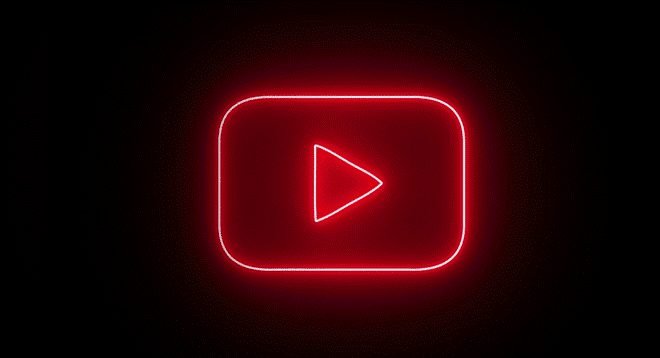Last Updated on March 5, 2023 by
Table of Contents
How to identify YouTube bots and distinguish them from subscribers?
Maybe no one was interested in the product offered? What if the seeding doesn’t work? Most likely, the reason is much simpler, and the group has an artificially constructed audience rather than truly interested members.
Below, we will tell you how to determine if subscribers are deceived and detect false engagement. But first, a few words about the causes, methods, and consequences of artificially expanding your audience.
Promotion solutions: unmasking
Facebook and VK, YouTube, Telegram, Twitch, and Instagram communities often use dubious tricks to increase the number of viewers and followers, as well as indicators showing the degree of audience engagement: reposts, likes, and comments. In this way, unscrupulous bloggers and site owners can increase advertising prices.
In addition, they can also suffer from these tricks if they encounter unscrupulous contractors who engage in scamming to improve reporting figures and demonstrate the high quality of their services.
In any case, it’s safe to say that if you buy ads from accounts with a fake audience, don’t count on their effectiveness. Get real subscribers to https://lowcostsmm.com as well as views on YouTube, and likes can be quickly and inexpensively.

How do botnets work?
Bots often work together. The largest exposed botnet had 350,000 fake accounts posting random Star Wars quotes. Most of the time, bots spread advertisements. They can report the weather or answer customer questions on company websites. But they can also be used for political purposes. They were especially active at the beginning of the Russia-Ukraine conflict, during the refugee crisis in Germany, and during the 2016 presidential election in the United States.
With mutual likes and reposts, topics or hashtags were artificially ordered.
For example, in 2015-2016, posts and hashtags against refugees in Germany were actively promoted with their help. Although there were quite a few pages on social networks supporting their arrival, they seemed much less popular without similar help from bots. This could lead to the false impression that most Germans are against it and that parties critical of the “open door” policy are especially popular in the country.
This is how bots can influence public opinion. They change the focus, promote fake news, discredit certain points of view, and attack specific people on the Internet.
How to distinguish a bot from a regular Internet user?
It is difficult to clearly identify a bot: even accounts “verified” by a social network (on Twitter, for example, they are marked with a blue “checkmark”) can be operated by a bot. Rather, we can talk about the probability that it is a bot. To do this, a suspicious profile must be carefully examined.
The less personal information it contains, the more likely it is a bot. Bots sometimes use names generated by algorithms that look like random combinations of letters and numbers. Sometimes the profile picture is female, but the name is male. Please pay attention to the subscribers: often, the bot has almost no friends, or there are other bots among them.
What kind of photo is in the avatar? Bots steal other people’s photos. Look for other accounts with the same photo through Google. Images or Yandex. Images reverse image search.
Other signs of a bot
In addition, abnormal activity can give away a bot. If a user is newly registered and posts several hundred tweets a day, it’s a bot. According to researchers at Oxford University, even 50 tweets a day or basically the same number of tweets a day would give away a bot. You can buy subscribers on YouTube at https://lowcostsmm.com/buy-youtube-subscribers/ for 100, 1,000, or even more at a low price.
Read what exactly this account posts. The same topics, the same tone, and retweets of the same media without personal comments are more likely to be characteristic of a bot.
The best thing to do is to keep an eye on the strange account for a while. If there is no doubt, report it to the social network administrators: the bot should be blocked.
Tips for detecting fake subscribers in social networks
To competently check whether a group, channel, or account is fake and reliably establish the presence of fakes, it is necessary to pay attention to some nuances and use special tools during the assessment. We have some practical tips to help you understand them.
Tip 1 – Consider the bias of impressions and views
Although it is not difficult to analyze these metrics, you have to remember that they do not show the real picture of popularity. In other words, you can’t know how many unique readers a post has. A user can interact with it several times, and each time will increase the statistics.
Let’s say he re-read the post five times. In the statistics, this will be reflected as five views instead of one. Therefore, to get at least an approximate figure, you need to divide the figure by two. Also, if you want to measure popularity on a video hosting like YouTube, the most important thing is not how many times a video has been viewed but how much time users have spent doing it. And it’s not easy to gain that.
Ask for detailed statistics, don’t be shy.
This way, you can get higher quality metrics, including data on organic reach on Facebook, unique views on VK, and time spent watching videos on YouTube.
Talk to the blogger or site administrator, and if they have no doubts about your effectiveness, they’ll share the information. And if they reject you, you can already draw a conclusion about how dubious the official figures are.
Tip 2 – Evaluate not only the number of subscribers but also the engagement.
You can use a formula like this to gauge your metrics:
The total number of activities/number of subscribers * is 100%.
The engagement rate (ER) is calculated for a given period. The higher the percentage, the more engaged the community is.
When the number of subscribers is high, and they are almost completely unresponsive, there are two possible reasons for this disproportionate picture. Either the social networks are poorly managed (uninteresting and useless content, abundance of ads, etc.), or the subscribers are inflated. But, in any case, it is not worth getting involved in these sites and paying for their services.
Specificity
The degree of engagement that is considered normal depends on the number of people participating in the community, the topics covered, and the characteristics of the social network in question. For an objective estimate, it is useful to take into account the average data of several popular sites.
Tip 3 – Evaluate the dynamics of your performance
It is almost impossible to gain subscribers and engagement without getting noticed. There are always a few pinpricks that can be used to detect fraud. Usually, everything is very rough, and the indicators literally grow before your eyes. That’s why you have to analyze them over time.
If you notice jumps in the graph that make it look like a staircase, there is reason to be suspicious. These subscribers may be perceived as fakes. But there are exceptions, such as an expansion of the active audience due to a successful advertising campaign or a high-profile social media post.
Therefore, one should compare the dates of the explosive increase in audience activity and the events that may have triggered it. These include, for example, public relations posts, promotional publications, and newsworthy events.

Tip 4 – Read the comments
This will make it easier for you to understand what kind of audience the site has and to determine which part of the comments may have been retouched. To check that the bots are reading them selectively.
If commenting for money, there is usually no in-depth information in the posts, and the authors have suspicious accounts that are new or even clearly fake.
Tip 5: count your clicks
It’s harder to get on a page than it is to “like” a post or leave a one-word comment on it, so the number of clicks is a better indicator of how active your audience is. In their absence, links posted under other posts are unlikely to get many clicks on yours.
When making this assessment, the first thing to do is to find the mentions on third-party sites and assess the click-through rate. Conversion statistics no one will tell you, but there are ways to find out for yourself. To do this, depending on the type of link, you need to add “+,” or “-” or convert the address to the full format and paste it into the address bar. The page you need will show the statistics you need.
Tools to detect fake links
Quickly find out if your Facebook and Instagram posts, YouTube videos, VK polls, or Twitch streams are not fake using special tools. Depending on your site, budget, metrics, and social media landscape, you can use these options.
Ad exchange
Examples of these platforms are Webartex and Epicstars, which provide advanced statistics without the need to subscribe. Blog addresses are publicly available, and you can analyze their performance.
Statistical and analytical services
You can use them not only to analyze the performance of your social media accounts but also that of your competitors. These services are, for example.
Specific tools to detect scams
They greatly facilitate the analysis of sites because they take into account many important nuances. For example, in the case of Instagram accounts, you can use FakeLikeInfo, a paid tool that detects dubious and fraudulent comments and likes.
The same social network (and only it) can be used by two other services: LiveDune and EPICDETECT, which are also available for a fee.
The performance of Twitter and VK accounts can be analyzed with free tools, Twitter audit, and Antidog, respectively.
Therefore, to detect fake users and their fake activity, you need to study qualitative indicators: the number of clicks on links, unique visitors and engagement, evaluate their dynamics and read comments. Ad exchanges, statistical services, and special tools help to detect fake data as effectively as possible.
A Qick Overview
YouTube is one of the most popular social media platforms for sharing video content. Creators aim to gain a large following to increase their visibility, engagement, and monetization opportunities. However, there is a crucial difference between bots and subscribers on YouTube. Let’s explore it further in this article.
What are Bots?
Bots are automated scripts that perform tasks on YouTube, such as liking, commenting, and subscribing to channels. These bots can be programmed to behave like real users, making it difficult to distinguish them from actual viewers. The primary purpose of using bots is to increase a channel’s subscribers, views, and engagement artificially.
What are Subscribers?
Subscribers are real people who follow a YouTube channel to receive updates about new video uploads. They choose to subscribe to a channel because they find the content engaging and relevant to their interests. Subscribers will likely engage with the content through likes, comments, and sharing.
The Differences between Bots and Subscribers on YouTube
- Authenticity: Subscribers are genuine followers who are interested in the content. On the other hand, bots are fake accounts created to inflate the number of subscribers artificially.
- Engagement: Subscribers engage with the content by commenting, liking, and sharing, whereas bots cannot provide any valuable interaction with the content.
- Sustainability: Bots are not sustainable in the long run,, as YouTube algorithms can detect and penalize channels that use fake engagement tactics. In contrast, subscribers provide sustainable engagement that can lead to long-term growth and success for a channel.
- Conversion: Subscribers are more likely to convert into customers or supporters, while bots have no real value for a channel.



























